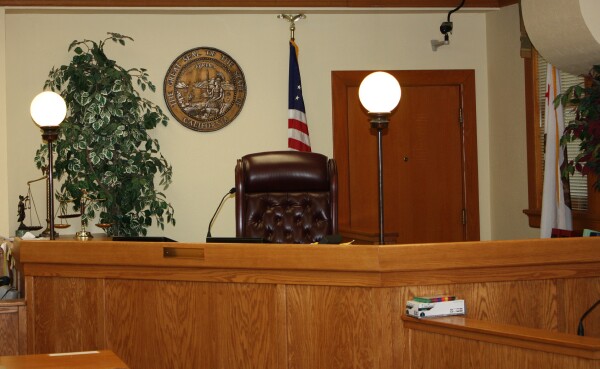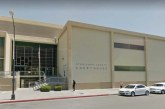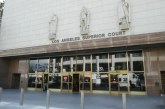
Chaired by Associate Justice Carlos R. Moreno of the Supreme Court of California, the committee includes appellate court justices, superior court judges, attorneys specializing in the First Amendment, a prosecutor, a criminal defense attorney, journalists, an academic, a superior court executive officer and a superior court public information officer (PIO).
The committee has issued forth these eleven recommendations and one declaration for the Judicial Council’s consideration.
First, it would change the guidelines on the use of cameras and other recording devices in the courtroom. Currently they are prohibited without Judicial approval. Under the new guidelines it would set forth an explicit presumption that cameras and other recording devices are allowed in the courtroom, unless sufficient reasons exist to prohibit or limit their use. Moreover it would require judges to make specific findings to prohibit or limit the use of cameras and other recording devices.
The committee does recognize that there is a balancing act between the public’s desire to use personal electronic devices while in court and the court’s duty to protect the integrity of proceedings, as new technological devices continue to develop.
Second, it would set forth a uniform statewide rule for gag orders, requiring specific findings of a legitimate competing interest that overrides the public’s right of access and justifies some form of gag order. It would limit the scope of any gag order to the narrowest restraint and shortest time period necessary to protect the overriding interest that has been identified. Furthermore, it would provide a means for the public and media to be notified of the filing of a gag order and allow them the opportunity to challenge that gag order at the earliest possible time.
Likewise, the third recommendation orders that courts notice and post any application for sealed records, provide judicial education regarding the proper process for determining when a record should be sealed and develop a form that will facilitate challenges by pro per individuals to orders for sealing records. Although this would require additional resources and staff, the committee believes this procedure is essential to inform the public about documents that could be considered high-profile, newsworthy cases.
Fourth, the committee supports creation of educational content programs to enhance relationships and cross-communication among the bench, bar, media, court staff, and public.
Fifth, the committee recommends developing training for judges and justices on how to present clearly the meaning or substance of court decisions in a way that can be easily grasped by the media and the public.
Sixth, it would encourage the court to provide an explanation of legal terminology by posting glossaries or explanations of legal terminology in multiple languages to their websites for the benefit of the media and broad public.
Seventh, they recommend additional online training materials for court staff and judges, by posting media-related training materials for the courts on a secure internal online site, such as Serranus.
Eighth, they recommend the implementation of a Regional Media Access Plan to address conflicts among the bench, bar, and media regarding access to the judicial process
Ninth, they recommend the creation of Regional Public Information Officer (PIO) positions. The primary responsibilities of the three recommended regional PIOs would include assisting local courts with the following: 1) coordination of media activities in high-profile cases; 2) response to other complex media situations; and 3) community outreach efforts and general media relations.
Tenth, following the Judicial Council’s receipt of the final report, direct the Administrative Director of the Courts to appoint a Bench-Bar-Media Implementation Working Group to assist AOC staff with developing a plan to implement the committee recommendations and to assist AOC staff with implementation.
Eleventh, they would create an implementation plan following the receipt of and approval of this information.
Finally they have a declaration on the reduction of the cost of trial transcripts for the media. “The Bench-Bar-Media Committee has concluded that representatives of the California Newspaper Publishers Association and other media should meet with representatives of court reporters’ unions and/or associations and attempt to develop a special protocol and pricing formula, which could both provide court reporters with opportunities for additional income without jeopardizing their current right to compensation from litigants for preparing transcripts, and also give the media an opportunity to obtain limited partial transcripts at a reasonable cost to assist them in preparing accurate accounts of court proceedings for publication,” they write.
They continue, “If those representatives meet and are able to reach agreement upon a modification of the current system that requires some change in rules of court and/or California statute, they should make an appropriate joint recommendation to the judicial branch and/or the Legislature.”
The public can comment on these changes up until 5 pm, Friday, October 29.
Commentary
Are there times when security is a legitimate concern? There is no doubt. In those times, the court can issue a specific ruling. But for most cases, most of the time, that is a non-issue.
Second, this proposal deals with another vexing problem, which is the fact that court transcripts are prohibitively expensive. How expensive? A long trial could cost upwards of $20,000. The transcripts are not available to copy and often not even available to take notes on. Which means that if the reporter or a member of the public has not attended trial, it will be extremely difficult to get ahold of a transcript to know what was asked and what various witnesses testified to.
One problem that the committee did not bring up is a problem that Jake Dorsey raised in his column last week, and we agree with. That is the length of time between the conclusion of the case and availability of the court file. There is a simple solution to this problem, having the court maintain a separate court file from public file. The public file would only contain information available to the public – this will save a large amount of time that staff takes to go through the file and redact or remove non-public filings.
Moreover the public file could be updated each day at the end of the proceedings so that it is immediately available to members of the media or the public.
Overall I think this report and recommendations are a good start and they will provide the public with much better court coverage, if fully implemented.
—David M. Greenwald reporting





dmg: “First, it would change the guidelines on the use of cameras and other recording devices in the courtroom. Currently they are prohibited without Judicial approval. Under the new guidelines it would set forth an explicit presumption that cameras and other recording devices are allowed in the courtroom, unless sufficient reasons exist to prohibit or limit their use. Moreover it would require judges to make specific findings to prohibit or limit the use of cameras and other recording devices.”
One potential problem I see with allowing unfettered camera access in the courtroom is that trials start to become a media circus, in which lawyers “play to the camera”. The O.J. Simpson case was a perfect example of this phenomenon. I’m not sure how this can be controlled. It may be that the camera access will become so routine that the media circus aspect will die of its own accord, but at the moment it is a problem in high profile cases particularly. Also, there will still be cases in which camera access cannot be permitted.
dmg: “Second, this proposal deals with another vexing problem, which is the fact that court transcripts are prohibitively expensive. How expensive? A long trial could cost upwards of $20,000.”
One reason trial transcripts can be so expensive is that the lawyer hires the court reporter, but may charge the client more than what the reporter was hired for. I had this happen to me. When I was handling my case on my own, I hired a court reporter for a third of what I paid when an attorney would hire the same court reporter. I was told by my attorney, when I did hire one, that I was not to hire the court reporter on my own. It was maddening. This practice of overcharging with respect to court reporters is known as “padding the bill”.
Elaine: Good points. The Judge would have the ability to limit cameras especially in high profile cases, but those are fairly rare. Most of the time that’s a non-issue.
Very good points. With todays technology I never understood why it has to be so difficult to record what happens in court, which is open to the public by constitutional design. I would like to see the use of both audio and video recordings for transcripts for two important reasons. One in case the court reporter didn’t hear something properly, often one word might sound like another, but they have two very different meanings. The other reason is that tone does not come across in a written transcript and a written transcript cannot record body language. Both are extremely important in understanding the full meaning of what is being said. Getting the audio recordings is a big step in the right direction. Thanks for bringing this to light.
How do the local court rules and the state court rules interact? Do the new state court rules mean that the proposed changes to Yolo County Superior Court’s local court rules need to be changed before they even go into effect?
(The deadline for commenting on the proposed changes to Yolo County Superior Court’s local court rules is October 12, 2010.)
Here are the current Yolo local court rules on recording devices.
http://www.yolo.courts.ca.gov/forms/Local Rules effective 2010.pdf
4.6 USE OF LAPTOP COMPUTERS AND ELECTRONIC DEVICES
All computers and electronic devices, including but not limited to cell phones,
pagers, and personal digital assistants shall be turned off before entering the
courtroom. If a laptop computer or electronic device is necessary for a matter at
issue, it may be used only if expressly authorized by the sitting judge at the
hearing. An electronic device shall not be handled in any way as to indicate a
picture, audio or video recording is being taken. Enforcement is in the sole
discretion of the sitting judge. Violators are subject to contempt of court and/or
confiscation of the computer or device. (Effective January 1, 2008; As amended, eff 01/01/10)
==========
Here are the proposed changes to the Yolo local court rules:
http://www.yolo.courts.ca.gov/forms/Proposed Additions-Modifications to Rules eff 1-1-11.pdf
4.5 CAMERAS, CAMERA PHONES OR OTHER CAMERA-PHONE- RECORDER EQUIPMENT
PROHIBITED RECORDING EQUIPMENT PROHIBITED
(a) Prohibited Activities. Photographing, videotaping, televising, or otherwise
recording any court proceeding is prohibited unless a written request has been filed and
approved by the Judge presiding at the proceeding prior to the commencement of the
proceeding. No one may use a camera or camera-phone to transmit, record, or take
pictures in any portion of the courthouse except as permitted by these rules and Rule
1.150 of the California Rules of Court. (Appendix 1)
(b) Members of the Media. Members of the media shall meet with the Court Executive
Officer, or his or her designee, prior to operating media equipment in common areas of
the courthouse.
Barbara King: “How do the local court rules and the state court rules interact? Do the new state court rules mean that the proposed changes to Yolo County Superior Court’s local court rules need to be changed before they even go into effect?”
All courts in the various counties in CA are now under state jurisdiction, not individucal county jurisdictions. So I would assume state law prevails in all state courts in every county, including Yolo…